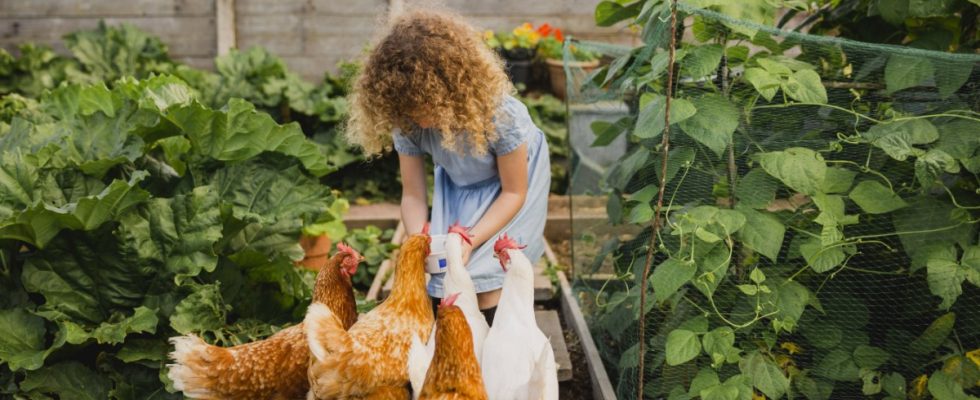It sounds like a broadcast from “Wetten, dass…” Thomas Gottschalk runs across the stage with a spring in his step. A candidate stands next to a bunch of chickens, her eyes covered with glasses made of plastic eggs. She bets that she can only tell whether the animals are excited or frustrated by their cackling. Great, the bet stands!
A similar experiment was carried out by researchers led by behavioral scientist Nicky McGrath from the University of Queensland in Brisbane, Australia. As she now in the trade magazine Royal Society Open Science to reportpeople can hear surprisingly well how the animals are feeling from the clucking of chickens.
Of course, their experiment was not a bet for a Saturday night show, but had a serious background: the domestic chicken is the most common farm animal in the world. According to United Nations estimates, more than 70 billion chickens slaughtered. The ability to detect emotional information from animals’ calls could improve their welfare on feedlots, says Joerg Henning, a veterinary epidemiologist at the University of Queensland and co-author of the study, according to a statement. This would make it easier to monitor the condition of the animals being kept. In the future, systems with artificial intelligence could also be used.
People can also interpret the moods of pigs and tree frogs
In their experiment, the research team played audio recordings of twelve female domestic chickens to 192 human participants. They expected either a reward or a disappointment – and cackled. The recordings came from an earlier experiment. The hens had learned to associate noises – such as the ringing of an old telephone or the sound of a car horn – with different consequences. Depending on the sound, something different was waiting for the chickens behind a door. Either a reward: bowls full of mealworms, normal food or a dust bath for the feathers. Or a bitter disappointment: an empty bowl. When the hens were excited about full bowls, they clucked either faster or higher. The latter is also called a food call. You can hear it in this video:
On the other hand, the chickens reacted to impending disappointment with a whimper or a tearful cluck. This soundtrack gives an impression of this:
The result of the experiment: 69 percent of the people could hear whether the chickens were happy or angry. Joerg Henning is quoted as saying that this is remarkable. It is further evidence that humans can recognize the emotional context of the calls of different animal species. Previous research has already shown that many animals express emotions in similar ways and that humans can associate their sounds. This may have been the case for early primates was an ability that was essential for survival and therefore became established through evolution. Previous studies have shown that people can recognize the mood of mammals, such as dogs and pigs, but also elephants and moose. The tone of the voice in particular reveals the animals’ mood: fearful animals tend to make high-pitched sounds, while aggressive animals sound deeper and rougher. But people can also interpret the mood of more distant relatives, such as reptiles and amphibians. A study showed that they can tell from the sounds made by tree frogs and alligators whether they feel threatened or disturbed.
In the case of Australian chickens, the study even showed that previous experience with chickens plays no role in the ability to hear frustration or joy from cackling. Employees in the poultry industry did not perform better than others.

